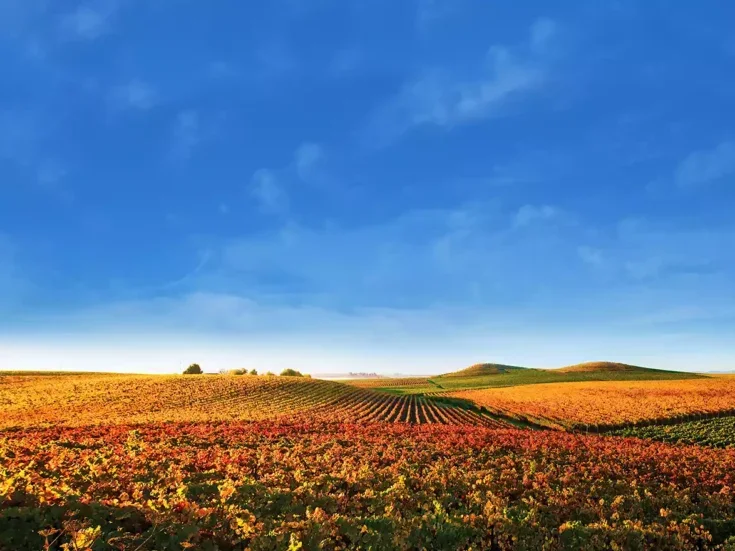When is it time to drink a vintage, and when should we wait? Hugh Johnson looks at the subject of drinking windows.
Whose business is it to advise us when to drink a wine—and do you take their advice?
We are all familiar with “Good to drink now but will improve,” “Drink or lay down,” and “windows” starting today and stretching decades ahead. It is easy to understand that a trader holding stock is not averse to getting it off his hands and moving on. Few producers want, or can afford, to be their own bankers by cellaring many vintages.
Should we listen to them or to producers or journalists or our own experience? Obviously the last, when you’ve gained enough…
Of course there are wines, with Vintage Champagnes the prime examples, that are simply not ready even to release for as much as a decade: 2012 is still the current release of several Champagne houses, ten years on.
Port vintages are unloaded without delay, the idea being that the householder, a person of means with conservative notions, bins it away for his children.
Sherry, in contrast, has traditionally masked its age in the solera system. We buy Bordeaux (they hope) in a flurry of excitement as the scores come out. Burgundy is privileged: There is a scramble for allocations of the best-known names. I suspect only a minority is laid down for more than a few years.
Heavenly Chambolle-Musigny
The idea for this discussion came to me the other evening when I opened a classic red Burgundy of no exceptional renown at the respectable age of ten years.
The wines of Chambolle-Musigny are one of my passions. You could call the commune the Margaux of the Côte d’Or (or not). Les Veroilles is one of its premiers crus and not the most prestigious. Bruno Clair is one of the Côte’s larger producers, highly respected but not quite the gratin. 2012 is considered a very decent vintage.
This is the bottle I found in not the most accessible rack in my little cellar. Three bottles, rather. It was clearly time to see whether more time would be a good idea.

A cellar window in Burgundy. Photography by Jon Wyand
The wine was heaven. I’ll admit that our daily drinking is claret. Burgundy tends to be for special occasions (or rather, special people). I poured it without saying anything to my wife. We were eating pheasant breasts in a demon sauce she makes, involving redcurrant jelly, stock, and a splash of red wine.
The glass was still 12 inches (30cm) from her nose when she stopped. “Wow,” was her not entirely elegant expression.
The breath of mature Pinot Noir is not subtle—until you sip again and examine it. It hits you like a gust of wind from a farmer’s field; sharp, vegetable, intense, with ruminating cattle lurking in the background, fruit trees in blossom.
It can’t be missed, or dismissed; its sweetness demands attention and urges your lips to investigate.
Claret? It lacks the urgency. You—perhaps I mean I—can hang my nose over it, take deep breaths, settle back and think, without the mad desire to consummate.
A vintage wrapped in velvet
Burgundy? In this ten-year-old bottle, the surprises have started. The eagerness is still there, but it is blossoming. Its bud is open, its petals unfold; you are wrapped in their velvet.
How can the texture of a liquid change from sharply tactile to caressingly plump and smooth? All it needed was time, motionless in your cellar. And a moment in your glass.
You can, of course, argue that the best age for any wine depends on your personal taste. There are national tastes; conventionally, the French for younger wine, the British (in folklore at least) preferring something more mellow.
Goût anglais, applied to Champagne, stresses the biscuit over the apple.
I risk trouble, I’m sure, in saying that certain preferences are simply wrong. Good luck if you’d rather drink the must than the finished wine.
What is wrong, I argue, is to pay a small fortune for a wine with the potential to achieve eventual beauty and to neck it (disgusting expression) before it has got anywhere near that moment.
I am hopeless at judging that potential. When I went to the ritual tastings of the new Bordeaux vintage, I listened in awe to colleagues asserting that this sample will be “drinking” in seven years, while another (always a grander) one will need 20.
The harder the young wine bites, you could almost say, the higher its potential. Usually, the grandest wines were the ones you were most reluctant to hold in your mouth.
Progress from initial vigor to eventual seduction is rarely a straight line. The proportions of acidity to tannin to more amiable fruit and masking alcohol may not be self-evident, even to the most experienced tasters.
Even veteran merchants rely for advice on the local palates of brokers who have grown up with these vineyards.
What remains a wonder, to me at least, is how consistently the pecking order—from first growths, down to crus bourgeois—is reflected in the density and power in the glass; perhaps most of all in the length of time it needs in the cellar, then stays on your palate—and in your mind.






